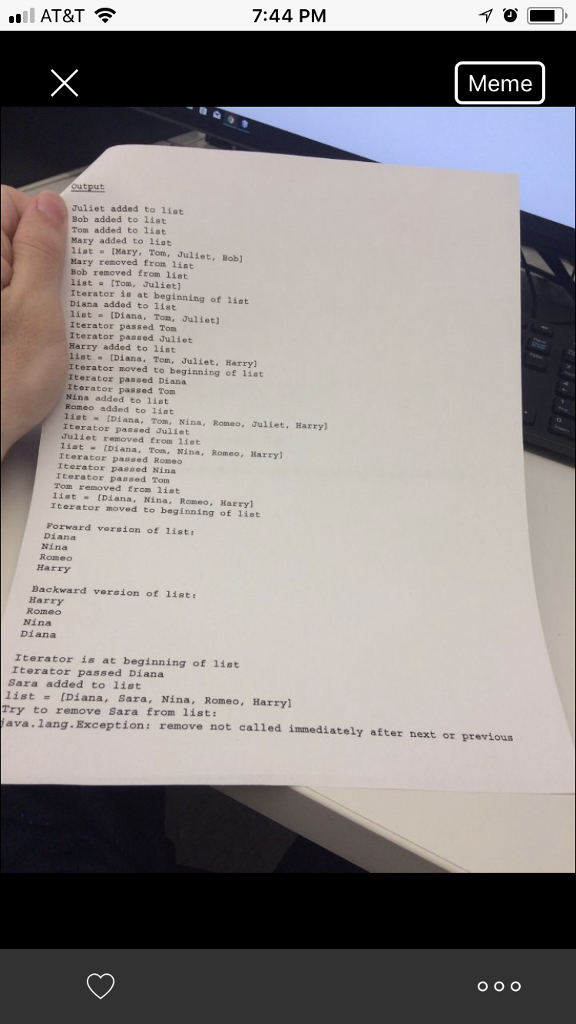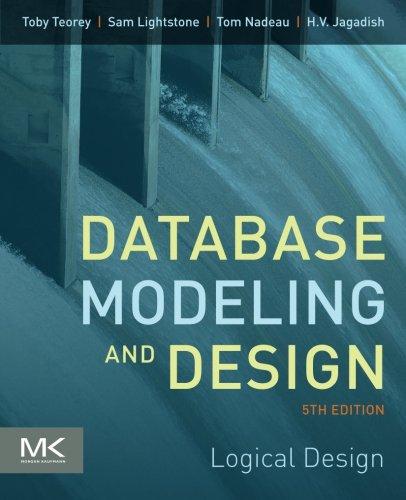Question
I need help with this Java program. There are starter codes too. Thanks Listlteratorlnterface.java: package list; public interface ListIteratorInterface { boolean hasNext(); boolean hasPrevious(); E
I need help with this Java program. There are starter codes too. Thanks


Listlteratorlnterface.java:
package list;
public interface ListIteratorInterface
List.java:
package list;
public class List
{
private Node first;
private Node last;
private int length;
private class Node
{
public E data;
public Node next;
public Node prev;
}
/**
* A generic inner ListIterator class that implements the
* ListIteratorInterface. It is used as a cursor to traverse the list.
*/
private class ListIterator implements ListIteratorInterface
{
private Node position; // the node on the left of the iterator
private Node previousPosition; // the previous iterator position
private boolean isAfterNext;
private boolean isAfterPrevious;
/**
* Constructs an iterator at the beginning of the linked list.
*/
public ListIterator()
{
position = null;
previousPosition = null;
isAfterNext = false;
isAfterPrevious = false;
}
/**
* Returns true if there is a node on the right of the iterator;
* otherwise, returns false.
*/
public boolean hasNext()
{
if (position == null)
return first != null;
else
return position.next != null;
}
/**
* Returns true if there is a node on the left of the iterator;
* otherwise, returns false.
*/
public boolean hasPrevious()
{
// Implement this method
}
/**
* Resets the iterator's previousPosition to its current position,
* resets the iterator's current position to the node on the right
* of its current position (moves the iterator, in the forward
* direction, past the node on the right), and returns the data
* value in the node that the iterator just passed over.
* Throws an exception if the iterator is at the end of the list.
*/
public E next() throws Exception
{
if (!hasNext())
throw new Exception("Called at the end of the list");
previousPosition = position; // Remember for remove.
if (position == null)
position = first;
else
position = position.next;
isAfterNext = true;
return position.data;
}
/**
* Resets the iterator's previousPosition to its current position,
* resets the iterator's current position to the node on the left
* of its current position (moves the iterator, in the backward
* direction, past the node on the left), and returns the data
* value in the node that the iterator just passed over.
* Throws an exception if the iterator is at the beginning of the
* list.
*/
public E previous() throws Exception
{
// Implement this method
}
/**
* Inserts a new node on the left of the iterator and resets
* the iterator position to this inserted node.
*/
public void add(E data)
{
if (position == null)
{
addFirst(data);
position = first;
}
else if(position.next == null)
{
addLast(data);
position = last;
}
else
{
Node newNode = new Node();
newNode.data = data;
newNode.next = position.next;
position.next.prev = newNode;
newNode.prev = position;
position.next = newNode;
position = newNode;
length++;
}
isAfterNext = false;
isAfterPrevious = false;
}
/**
* Removes the last node passed over by the iterator in a call to
* either next or previous.
* Throws an exception if remove is not called immediately after a
* call to either next or previous.
*/
public void remove() throws Exception
{
// Implement this method
}
/**
* Replaces the data value in the node on the left of the iterator
* with the input data value.
* Throws an exception if the node on the left of the iterator is
* null.
*/
public void set(E data) throws Exception
{
if (position == null)
throw new Exception("set call on a null node");
position.data = data;
}
}
// Constructs an empty linked list.
public List()
{
first = null;
last = null;
length = 0;
}
/**
* Returns the number of elements in the linked list.
*/
public int size()
{
return length;
}
/**
* Adds a new node at the beginning of the linked list.
*/
public void addFirst(E data)
{
Node newNode = new Node();
newNode.data = data;
if(length == 0)
{
first = newNode;
last = newNode;
}
else
{
newNode.next = first;
first.prev = newNode;
first = newNode;
}
length++;
}
/**
* Adds a new node at the end of the linked list.
*/
public void addLast(E data)
{
// Implement this method
}
/**
* Removes the first node in the linked list and returns this node's
* data value.
* Throws an exception if the list is empty.
*/
public E removeFirst() throws Exception
{
if(length == 0)
throw new Exception("Non-empty list expected");
E data = first.data;
if(length == 1)
{
first = null;
last = null;
}
else
{
first = first.next;
first.prev = null;
}
length--;
return data;
}
/**
* Removes the last node in the linked list and returns this node's
* data value.
* Throws an exception if the list is empty.
*/
public E removeLast() throws Exception
{
// Implement this method
}
/**
* Returns the data value in the first node of the linked list.
* Throws an exception if the list is empty.
*/
public E getFirst() throws Exception
{
if (first == null)
throw new Exception("Non-empty list expected");
return first.data;
}
/**
* Returns an iterator for iterating through the linked list.
*/
public ListIterator listIterator()
{
return new ListIterator();
}
/**
* @return a string representation of the elements of the linked list
* in the format [e0, e1, ..., en-2, en-1], where each ei is a data
* value in the list and e0 is the data value in the first node
* and en-1 is the data value in the last node. It returns [] if this
* list is empty.
*/
public String toString()
{
String string = "[";
if(length > 0)
{
Node node = first;
string += node.data;
while(node != last)
{
node = node.next;
string += ", " + node.data;
}
}
string += "]";
return string;
}
}
ListDemo.java:
package list;
public class ListDemo { public static void main(String[] args) { try { List
} }
Inked List with Doubly-Linked Nodes and Two External Pointers In today's lab you will imple named next and prev, that po respectively. Also, this linked list ha: to the first node in the list (the letter node), respectively. it and prev, that point to the node on the right and the node on the left, ement a generic linked list in which each node has two pointers, his linked list has two external pointers, named first and last, that point i the list (the left-most node) and the last node in the list (the right-most This project will have the following interface and classes: public interface ListiteratorInterfaceStep by Step Solution
There are 3 Steps involved in it
Step: 1

Get Instant Access to Expert-Tailored Solutions
See step-by-step solutions with expert insights and AI powered tools for academic success
Step: 2

Step: 3

Ace Your Homework with AI
Get the answers you need in no time with our AI-driven, step-by-step assistance
Get Started


